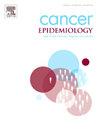Treatment switching between Enzalutamide and Abiraterone Acetate and time to oral opioid initiation in castration-resistant prostate cancer patients
IF 2.4
3区 医学
Q3 ONCOLOGY
引用次数: 0
Abstract
Background and aims
Enzalutamide (ENZ) and Abiraterone Acetate (AA) are both first-line treatments for castration-resistant prostate cancer (CRPC). CRPC patients may switch from ENZ to AA or from AA to ENZ, if they do not respond well to the treatment, or experience intolerable side effects. This study examine treatment switching from ENZ to AA or from AA to ENZ, while investigating death as a competing risk. Whether ENZ compared to AA was associated with a longer time to starting oral opioids was also investigated.
Methods
An active comparator new-user design was used to identify 1406 men diagnosed with CRPC who received ENZ and AA using the Surveillance, Epidemiology, and End Results-Medicare Linked Database from 2012 to 2016. Inverse probability treatment weights (IPTW)-adjusted Fine-Gray competing risk models were used to compare the switching drugs and time-to-first use of oral opioids after initiating ENZ and AA.
Results
Most patients (61 %) received AA, while 39 % received ENZ. Overall, ENZ demonstrated a significant reduction in the Sub-distribution Hazard Ratio (SHR) for switching treatment (IPTW-adjusted SHR 0.63; 95 % CI, 0.54–0.73; P < 0.001), indicating a decrease in treatment switching compared to AA. Cumulative incidence curves revealed substantial differences in switching patterns over time (Gray's test, p < 0.001). For time-to-first oral opioid use, the IPTW-adjusted SHR when comparing ENZ to AA was 0.95 (95 % CI, 0.83–1.09; P = 0.48), showing no significant difference between the two groups.
Conclusion
Patients who began their treatment with ENZ exhibited a substantially lower hazard of switching to AA when compared to those who started with AA.
去势抵抗性前列腺癌患者恩杂鲁胺与醋酸阿比特龙治疗切换及口服阿片类药物起始时间
背景和目的:senzalutamide (ENZ)和阿比特龙醋酸酯(AA)都是去势抵抗性前列腺癌(CRPC)的一线治疗药物。CRPC患者如果对治疗反应不佳或出现难以忍受的副作用,可能会从ENZ转为AA或从AA转为ENZ。本研究考察了从ENZ到AA或从AA到ENZ的治疗转换,同时调查了死亡作为竞争风险。与AA相比,ENZ是否与口服阿片类药物开始使用的时间更长有关也被调查。方法采用主动比较器新用户设计,对2012 - 2016年监测、流行病学和最终结果-医疗保险关联数据库中诊断为CRPC的1406名接受ENZ和AA治疗的男性进行比较。采用逆概率治疗权(IPTW)调整的Fine-Gray竞争风险模型比较ENZ和AA启动后口服阿片类药物的切换药物和首次使用时间。结果大多数患者(61 %)接受AA治疗,39 %接受ENZ治疗。总体而言,ENZ显示切换治疗的亚分布风险比(SHR)显著降低(iptw调整后的SHR为0.63;95 % ci, 0.54-0.73;P <; 0.001),表明与AA相比,治疗转换减少。累积发生率曲线显示切换模式随时间的显著差异(Gray检验,p <; 0.001)。对于第一次口服阿片类药物的时间,比较ENZ和AA时,iptw调整的SHR为0.95(95 % CI, 0.83-1.09;P = 0.48),两组间差异无统计学意义。结论开始使用ENZ治疗的患者转向AA的风险明显低于开始使用AA治疗的患者。
本文章由计算机程序翻译,如有差异,请以英文原文为准。
求助全文
约1分钟内获得全文
求助全文
来源期刊

Cancer Epidemiology
医学-肿瘤学
CiteScore
4.50
自引率
3.80%
发文量
200
审稿时长
39 days
期刊介绍:
Cancer Epidemiology is dedicated to increasing understanding about cancer causes, prevention and control. The scope of the journal embraces all aspects of cancer epidemiology including:
• Descriptive epidemiology
• Studies of risk factors for disease initiation, development and prognosis
• Screening and early detection
• Prevention and control
• Methodological issues
The journal publishes original research articles (full length and short reports), systematic reviews and meta-analyses, editorials, commentaries and letters to the editor commenting on previously published research.
 求助内容:
求助内容: 应助结果提醒方式:
应助结果提醒方式:


